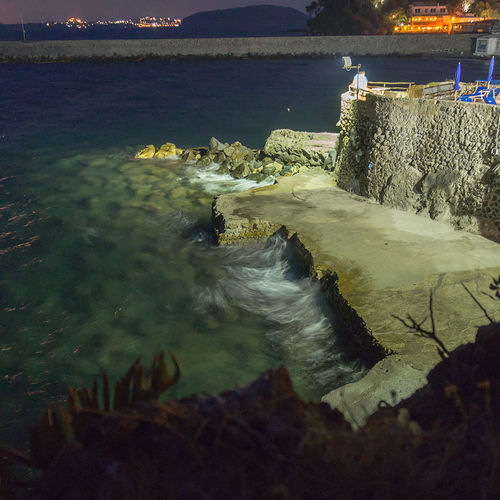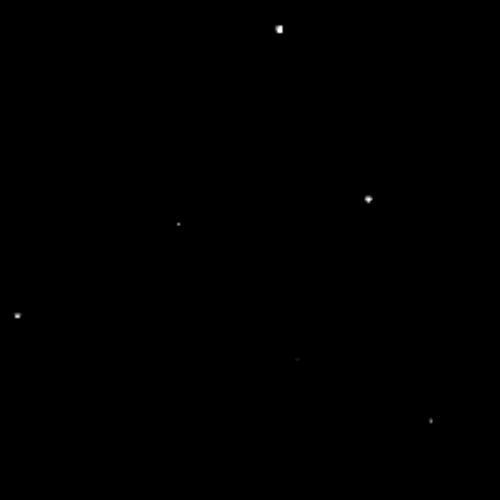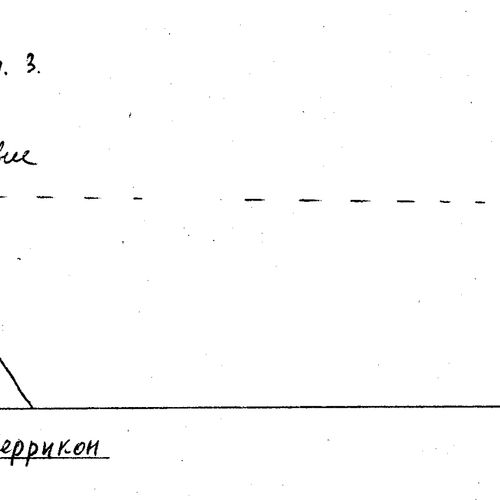| ID | #1593689576 |
| Added | Thu, 02/07/2020 |
| Author | July N. |
| Sources | |
| Phenomena | |
| Status | Hypothesis
|
Initial data
The following information came to us from June Ichi Takanashi, APRO representative in Japan. This is a condensed version of the full report.
On the evening of 13 February 1967(?) years of 17-58 Socio Sakuma from Tokyo (Japan), photographed the moon using my camera Petri V6. Camera data 7/4 sec. (SSS) Fl.8 f255 mm S-2 T-5 x 42 (H20).
Sakuma did not notice the object at the top of the photo when he took a picture, but presented a picture of Association of modern space flight on March 17.
He hopes that perhaps someone else could observe the object, but to date, no information on additional observations were reported.
Hironobu naoi of the MSFA, sent the photo to a photo Studio Chigusa and asked to evaluate it. After careful examination they came to the following conclusions:
(1) that the photo was not a hoax
(2) consider the possibility that it was a photograph of an artificial satellite.
Then the photo was transferred to the newspaper "Asahi" for the study, they brought her back with the same conclusion as the Studio Chigusa, and then asked to enter it in "photo Contest for readers."
7 APR Sakuma denied the assumption that the object in the photo could be an artificial satellite, Iolo wrote in a letter to Naoi:
"As for the possibility that it was an artificial satellite; if this were so, it would be possible to see approximately ten seconds after taking the picture, because the speed of the satellite is quite low, but I couldn't see anything in the vicinity of the moon, when I again saw the moon after taking a photo".
At the time Naoi took the photo in the Studio Chigusa, and also sent copies of this photo to others, among whom were Yoshichika Sakamoto, a competent Amateur astronomer, who frequently publishes articles about the moon in astronomical magazines in Japan.
His comments (compressed) from 10 April are as follows: comparing the photos with meteors, it has not found any comparable. He felt that if it was a meteor, the picture would be longer. Since the object was weak "tail", it should take into account the possibility of the comet, but the tail does not coincide with the direction from the sun judging by the shadow of the moon. He believed that it could be a weak meteor, which suddenly exploded, but its clear shape makes it a very rare picture, if not the only one.
Given the possibility that the object was a real UFO, Sakamoto asked the question about the cause of object blur compared to the crisp picture of the moon, and then commented that it may be associated with speed. He stated that it is impossible to judge whether the reflected solar light. As for the size, he said that the assessment cannot be done.
Takanashi, having received the letter, comments and the photo, recalled that he had seen a similar photo and then remembered that it was an alleged photo of the satellite Pegasus, taken by astronaut James Mcdivitt 4 June 1965 from the spacecraft Gemini.
Takanashi said that although the official release identificeret object elliptical shape as a Pegasus, he was not convinced. Takanashi comes to the conclusion that, in submitting this report to the APRO staff can be obtained some answers or at least suggestions. If members in General have any comments or suggestions, they can be sent to the headquarters APRO in Tucson, and they will be forwarded air mail Takanashi.
Translated by «Yandex.Translator»
Original news
Date: February 13 1967
Location: Tokyo, Japan
Time: 5:58 P.M.
Summary: Report From Japan The following information reached us from Jun-Ichi Takanashi, APRO’S representative in Japan, It is a condensed version of a complete report and has been shortened in the interest of space, only: See photo above. On the evening ol 13 February 196? at about 5:58 P.M. Mr. Sachio Sakuma of Tokyo, Japan, was taking photographs of the moon with his camera, Petri V6, The camera datat 7/4 sec. (SSS) Fl.8 f255 mm S-2 T-5 x 42 (H20). Mr. Sakuma did not notice the object in the upper part of the photo when he took the photo, but submitied the photo to Modern Space Flight Association on March 17. He hoped that perhaps some’ one else might have observed the ob’ ject, but to date no information on additional sightings has been reported. Mr. Hironobu Naoi of the MSFA took the photograph to Chigusa Photo Studio and asked lor an evaluation. After care ful inspection they came to these con clusions: (1) That the photo was not a hoax and (2) the possibility should be considered that it was a photo of an artificial satellite. The photograph was then submitted to the Asahi newspaper for examination, ,-.they returned it with the same conclusions as those of the Chigusa Studio, then asked to enter it in their “Readers Photo Contest.” On April 7 Mr. Sakuma refuted specu- lation that the object in the photo could have been an artificial satellite as Iollows in a letter to Mr. Naoi: “As to the possibility that it was an artificial satellite; if it had been, it might have been seen after ten seconds or so alter taking the photo, as a satellite’s speed is rather slow, but I could not see any in the vicinity of the moon when I saw the moon again after taking the photo.” At the time Mr. Naoi had taken the photo to the Chigusa Studio he also sent copies of the photo to others, among whom was Mr. Joshichika Sakamoto, a comPetent amateur astronomer who frequently contributes articles dealing with the moon to astronomical magazines in Japan. His comments, (condensed) dated April 10 are as follows: comparing the photo tvith those of meteors, he could find none comparable. He felt that il it had been of a meteor the image would have been longer. Because the object had a faint “tail” he ielt comets should be taken into consideration, but the tail does not coincide with the direction of the sun, judging from the shadows of the moon, so h uled that out. He considered that it might have been a faint meteor which had suddenly exploded, but its clear outline makes it a very rare photo, if it is one, Considering the possibility that the object was a true UFO, Mr. Sakamoto questioned the reason why the object is blurred compared with the clear image of the moon, then comments that it could be due to speed. He stated that it was not possible to judge whether or Not the object was reflecting sunlight. Concerning size he said that no estimate could be made. Mr. Takanashi, upon receipt of the letter, comments and photo, recalled that he had seen a similar photo, then remembered that it was the alleged photo oF the Pegasus satellite taken by Astronaut James McDivitt on June 4, 1965 from the Gemini spacecraft. Takanashi says that even though the official release identifies the elliptical-shaped object as Pegasus, he is not convinced. Mr. Takanashi concludes that in submitting this report to the APRO staff some answers or at least suggestions might be Forthcoming. If members at large have any comments or suggestions they can be addressed to APRO Headquarters in Tucson and they will be relayed via air mail to Mr. Takanashi.
Hypotheses
Re-reflections in lens lenses from a strong light source

The lens consists of a set of lenses (in some lenses - of mirrors), designed for mutual compensation of aberrations and assembled into a single system.
From the contour light (bright light sources behind the subject or next to it), caught in the frame or located outside the frame, parasitic reflections from the internal elements of the lens are formed, called glare (or in slang "hares").
Satellite

Ordinary satellites, which often look like single, not very bright luminous dots moving smoothly in the night sky, are quite often mistaken for UFOs. After the Starlink satellites (near-Earth satellite systems developed by SpaceX, in order to create a cheap and high-performance satellite Internet communication channel and technical transmitters for receiving and transmitting signals from earth and orbit) were launched, it became possible to observe groups of satellites (up to 60 pieces) flying one after another.
Investigation
Resume
Similar facts
Log in or register to post comments



